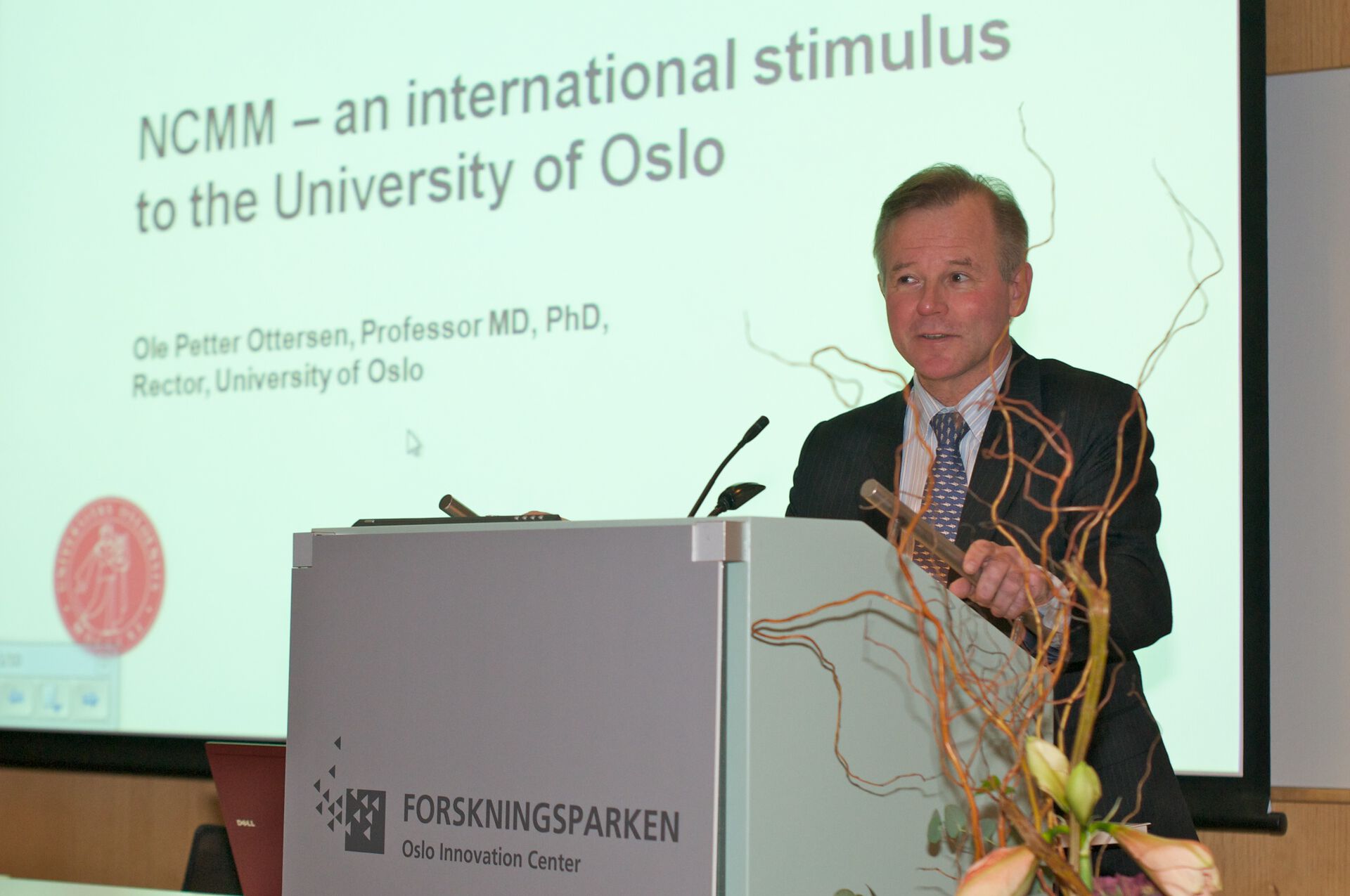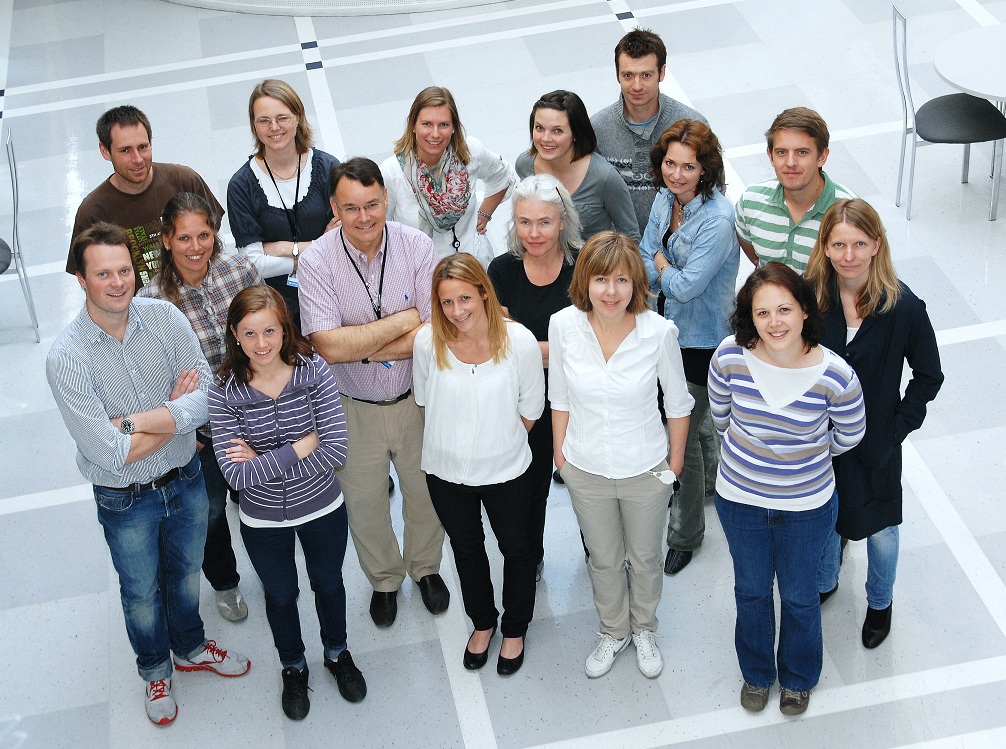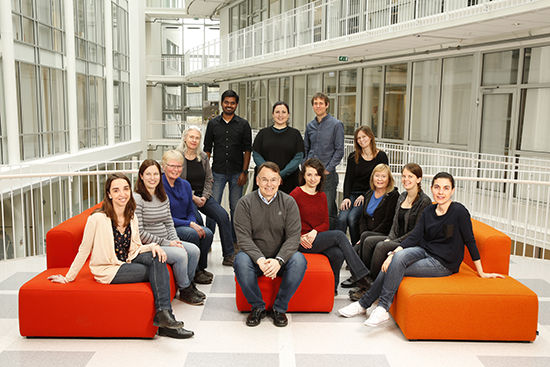Here, Prof. Taskén discusses how he went from training as a medical doctor to becoming involved in the planning process that would eventually establish NCMM, and shares an update on his group’s recent research successes.
Can you describe your career up until the point of becoming Director of BiO and, subsequently, NCMM?

I first started to focus on research whilst at medical school. I became part of what was then called the Research Council’s ‘MD/PhD track’ and was able to fit my PhD in around and after completing my medical training. After my PhD was completed and whilst undertaking my hospital training internships, I was awarded a postdoc grant from the Norwegian Cancer Society. This meant postponing my general practice (GP) internship so that I could complete my postdoc at the Institute of Basic Medical Sciences, UiO, in the group of Professor Vidar Hansson. In 1997, Professor Hansson accepted another position. This allowed me to take on and continue to build up his group whilst still a postdoc. We were very successful with our grant applications and, by the time I was finishing my postdoc, we had grown to be a group of 12. I was subsequently awarded a senior scientist position with the Norwegian Cancer Society. As I didn’t yet have a permanent contract, I was called to an associate professor position at the Institute for Basic Medical Sciences in 2001 before being retroactively promoted to a full professor. I had a great group there, working with research into tumour immune regulation mechanisms and other signalling mechanisms.
In 2003, the Board of the Biotechnology Centre of Oslo (BiO) was looking for a new Director and I was invited to apply. On taking up the role I was challenged with re-organising BiO, taking it from a technology-focused centre to an international research centre. This would allow testing of the EMBL model of recruiting young group leaders to non-tenured 5+4 years positions. Among our first hires following the model were Hilde Nilsen and Bernd Thiede. They each stayed for two periods and then rotated out to permanent positions at UiO. These and other very successful hires proved that the EMBL model would work in Norway. This really helped to set the precedent of how such an international research centre would operate and, in doing so, helped to lay the foundations for the setting up of NCMM.
Can you tell me a bit about how NCMM came to exist as a Centre, and what the process involved?
In around 2001- 2002, discussions had started with the EMBL Council as to whether an EMBL outstation could work in the Nordic countries. The initial plan was to create one large ‘powerhouse’ centre for Nordic research, which would take advantage of the well-organised and traceable Nordic health records and a combined Nordic population of around 25 million people. This model would allow the Nordics to benefit from an EMBL association but without the countries having to invest as individuals. This was important because EMBL membership is very expensive for smaller countries.
After it became clear that there was not enough support for creating just one Nordic centre with investment from four Nordic countries, the discussions moved on to consider a distributed model. This would see each country set up a smaller centre that would be part of a wider Nordic partnership. This secured more political support from the countries concerned. Based on the response to a call for Nordic Centres of Excellence in Molecular Medicine and the number of short-listed applicants, the Research Council of Norway pointed to the University of Oslo to plan and host such a national Centre. Ole Petter Ottersen, Stefan Krauss and myself were asked to work together with the UiO leadership to develop the concept. We would act as founding partners to offer support and provide scientific mass for the Centre from the start.
After further plans were submitted and elaborated on between UiO and the founding partners, and funding discussions were held between UiO and the Research Council, a plan was put to the Norwegian Ministry of Research and Education who approved the idea. EMBL was also involved at this point, sharing their input on how this centre could become part of a Nordic EMBL Partnership. The formal funding decision then came in October 2006 with the announcement of the national budget for Norway. NCMM was a line item, with a statement that the Ministry of Education and Research would make the funds available with which to start a national centre for molecular medicine. The Centre would have a specific mission for translating research findings into clinical practice. The Partnership Agreement was then signed a bit later in 2007.
As Director of BiO, which was already following the EMBL model, and one of the founding partners, I was tasked with directing NCMM from the start. NCMM’s first group leader hires, Erlend Nagelhus, Ian Mills, and Preben Morth joined in 2009. In March 2010 we had a wonderful official opening celebration at the Tøyen Hovedgård at the Botanical Gardens, hosted by Ole Petter Ottersen, then the UiO Rector.

How was the process of merging BiO and NCMM, and why was this decision taken?
The merger made a lot of sense because BiO and NCMM were two parallel centres following the same model and located in the same building but their ownership was. BiO was fully owned by UiO whilst NCMM had three core funders: UiO; Helse Sør-Øst; and the Research Council of Norway. There were a lot of considerations with regards to the merge but, when the timing was right and the strategic objectives of both centres aligned, the owners all agreed. The two centres thus finally became one in 2017.
What do you regard as your greatest successes during your time as Director of NCMM, and what are you most proud of?
One thing that I am most proud of is playing a key role in the planning and setting up of NCMM. NCMM's successes since its launch certainly made all the hard work involved in launching the Centre worthwhile. I think we then made some great recruitments at NCMM, in terms of our group leaders and our PhD students, postdocs, and Masters students. I’m proud of the many NCMM and BiO group leaders who successfully rotated out into their current positions; they all seem to have done very well since leaving the Centre. I am also proud that NCMM had two very successful external evaluations which formed the basis for extending the Centre for a further 5 + 5 years. I also think that it was a great decision to start the Associate Investigator programme. This helped to gain national support for NCMM and broaden the environment even more. I see that with the latest call the network is bigger than ever and that NCMM is becoming even more connected to other university and hospital environments all over Norway.

It has also been fantastic to see the evolution of the Nordic EMBL Partnership grow from its initial plans into the Nordic network that exists today. I thank Iain Mattaj for his early support for NCMM; I remember him coming to visit UiO early in the process and agreeing that the prospects for starting a centre like NCMM were looking very promising.
Looking back, was there anything you would have done differently or changed whilst Director?
I’m not sure I would have been able to solve this, but I think the Centre could have benefitted from being situated in an environment that gave our young group leaders more access to senior PIs and other researchers from similar environments. If I could have done one thing differently, it would have perhaps been to mobilise a more senior presence on a day-to-day basis. This might have also helped our group leaders to build stronger connections with UiO and OUH (Oslo University Hospital) environments.
How do you think following the non-tenure-track (‘EMBL’ model) for group leader recruitment helps to drive innovation and excellence in research?
The more traditional long-term professor recruitments involve a 30+ year commitment. This makes universities and hospitals extremely careful when hiring; the candidate needs to show a very strong output and have proven strategies demonstrated over several years. I think the EMBL model can complement this traditional model, as followed by NCMM. The model helps to find early excellence and bright ideas amongst researchers who might not yet have all the funding in place. At NCMM they get the chance to start their own group and test out some of their ideas, along with plenty of freedom to explore research projects. They’re able to take risks and do their own thing whilst supported by the infrastructure of the Centre and, more widely, UiO.
From your insight and experience, what do you hope for NCMM’s future?
I think the move into the new Life Science Building will be a wonderful opportunity for NCMM. This will offer a bigger environment with a more senior presence to guide young researchers. It’ll be a fantastic setting that will complement NCMM’s younger group leader hires with the more senior researchers from UiO and OUH. I think this will also help address the lack of senior support and mentorship that NCMM has experienced. The new building will also be a state-of-the-art research centre offering great new facilities and ample opportunities for success. It will set the scene nicely for NCMM’s future and I think the successes that the Centre will have here will help to further show how important NCMM is for UiO.
What have you been up to since leaving NCMM in 2018?
I am now Head of the Institute for Cancer Research at Oslo University Hospital (OUH). My group is based at the Department of Cancer Immunology. It’s a wonderful building that’s home to great facilities and lots of outstanding researchers. There are 25 groups and around 400 people, so it’s a powerful environment for cancer research. We have just had an SAB visit at the ICR and, since our new SAB could not come here in the midst of the pandemic, we made a video to showcase our research, the facilities and the building. It is available on YouTube and can be accessed from here: https://www.ous-research.no/institute/
My group focuses on two principle lines of research. One line, which we have been working on for some time, involves the mechanisms of immune regulation relating to immuno-oncology. Our research explores how we can interfere with tumour immune evasion and boost anti-tumour immunity. We recently received funding for another 3 years both from the Cancer Society and the Research Council FRIPRO programme to continue with to separate aspects of this. We also work with functional precision medicine. Here, we work with potential future diagnostics and tools to stratify patients for different treatments. This involves screening cancer cells with drugs and is something that evolved out of my work with the Chemical Biology Platform at NCMM, who we still collaborate a lot with. This research is funded by the RCN Digital Life Norway centre (PINpOINT project) and ERA PerMed (new project CLL-CLUE coordinated by Sigrid Skånland) and a UiO Convergence grant (PerCaThe) for our hematology projects and Helse Sør-ØSt (a new grant) for starting work with solid tumours (ovarian cancer, and others).
I’m also now involved with a lot of strategic work. This has involved setting up a national precision medicine implementation initiative, which is now a cluster of five different projects. We have the InPreD (Infrastructure for Precision Diagnostics) diagnostic platform, which from 2021 will screen patients with advanced cancer using a 500-gene panel test. Mapping their genes and expression profile will allow us to see whether the patient has a genetic mutation that could be treated with a targeted therapy. This would then be discussed in a national molecular tumour board that is currently being established. If treatment appears possible and a suitable drug is available, they can be referred to the IMPRESS Norway clinical trial, something that I have also worked to set up (see impressnorway.com). This is a national clinical study that will focus on drug repurposing and the investigation of drugs that are already approved for one indication or another. All hospitals in Norway that treat cancer patients will participate. The study is modelled on the DRUP trial from the Netherlands, which has been extremely successful.
We also have the INSIGHT project underway. This examines statistics and evidence found in registry data, and we’re now working on getting this funded. The project will examine health economy, reimbursement mechanisms and the ethics, legal, and regulatory aspects involved. We also recently started to work on the funding of a radiology project called TRAIN using AI for response valuation and we have established the CONNECT public-private partnership with 22 partners just before Christmas (https://oslocancercluster.no/2020/12/21/landmark-public-private-agreement-for-precision-cancer-medicine/ and https://www.dagensmedisin.no/artikler/2020/12/21/presisjonsmedisin-nytt-offentlig-privat-samarbeid/).
We are also working on a cell therapy initiative which works with experimental cell therapy, involving gene therapy and gene transfer for cancer. We have joined forces across Norway to see if we can grow this into a national infrastructure for regenerative medicine, called ‘ACT Norway’. I’m pleased to say I’m continuing to work with NCMM researchers here. For example, Emma Haapaniemi and her group’s work with CRISPR are involved in the project. We have now made an application to the Research Council of Norway to support this.
To learn more about the Taskén group and their research, visit: https://www.ous-research.no/kt/
